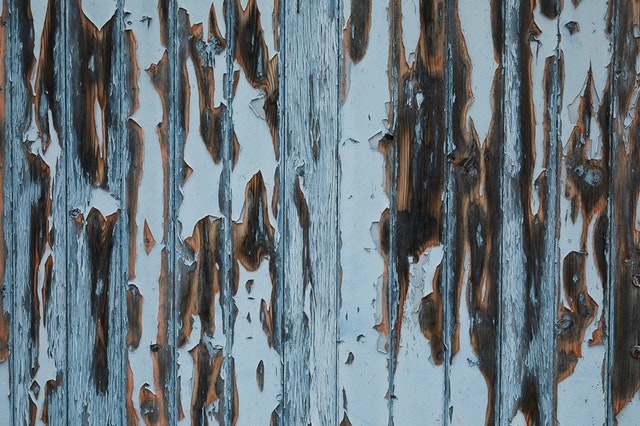It’s common knowledge that the more frequently an item is used, the more it deteriorates. When this happens to a rental unit, it is called “normal wear and tear,” and it’s a commonly accepted part of owning property. Through no fault of the tenant or the landlord, the property and its furnishings will experience normal wear and tear. However, it is helpful to acknowledge the difference between normal wear and tear and actual property damange.
At Cressman Realty & Property Management, we want to ensure you are fully equipped to tell the difference between property damage and normal wear and tear. This article aims to help you! Understanding what constitutes as property damage versus normal wear and tear can help you determine whether you or your tenants should shoulder the cost for the repair of a damaged item or a damaged feature of the property.
What is reasonable wear and tear?
Normal wear and tear occurs in your property naturally occurs over time as the property is used by its tenants. Parts of the home and its furnishings are expected to gradually deteriorate through usage. This is normal and is not an indication of abuse or neglect on the part of the landlord or tenant. There’s always bound to be a state of decline for most things, and rental properties are certainly not an exception.
It is reasonable to expect some wear and tear in your rental properties, since people occupying them will leave a few marks here and there. For example, there might be a few water stains on a kitchen countertop when tenants are living in your rental units. You can’t always expect that your rental property will look like the day it was newly constructed if you are renting it out to tenants. A bit of deterioration here and there is not something to be too concerned about.
So, what are some examples of normal wear and tear?
- Scuffs and scrapes on a wooden floor
- Stained and/ or worn carpet
- Fading appearance of a wall paint
- Slightly torn look of wallpapers
- Loose door handles and locks
- Dirty grout on the floor tiles
- Small nail holes in the walls
- Enamel on sinks and bathtubs appear worn away
What is property damage?
Even with so many benefits of accepting tenants with pets, the majority of landlords remain skeptical of allowing them into their rental properties. They are also less likely to want to continuously change their pet’s living environment.
For this reason, once accepted, pet owners are likely to rent for longer periods as they have limited options.
What are examples of property damage?
- Broken toilet seat or handle
- Carpets marked by cigarette burns or excessive pet stains
- Numerous cracks on a mirror
- Missing cabinet door handles
- Sizable holes on the walls
- Chipped floorings or broken enamel
- Appearance of broken windows
Why do you need to learn about normal wear and tear?
A myriad of conflicts can form between a tenant and landlord when it comes to normal wear and tear. A tenant may disagree with the repair deductions from the tenant’s security deposit. A landlord may also be unwilling to shoulder the costs for damages. It must be remembered that the security deposit must not be touched to pay for normal wear and tear repairs.
If a landlord is less aware about the key differences between property damages and wear and tear, the conflict can escalate. A tenant looks forward to a full security deposit by the end of the tenancy. The landlord, on the other hand, works to ensure that the rental space remains in a good rental condition. If a tenant committed grave abuse as shown by the property damage, then the landlord will not hesitate to submit the damaged items to repair or replace them at the cost of the tenant.
What is a walk-through inspection?
Performing a walk-through inspection helps a great deal by reducing several conflicts. A walk-through inspection is a process where both the landlord and tenant inspect the property together. It’s performed before the move in or move out date depending on the agreement or provincial requirement.
This step allows both parties to assess the condition of the home and all its furnishings and appliances. Documentation is encouraged with photos and videos, so proof is easier to obtain. The documentation will speak for itself as you go through the rooms and the items present in the rental unit.
After the inspection is done, both parties sign the document with a date to guarantee they’re on the same page in terms of the present condition of the rental. Changes are bound to come along between the date of the move in and move out so it’s essential to keep the condition of the unit well-documented.
Once the rental period ends, a final walkthrough inspection is undertaken to evaluate the state of the property. Damages will be repaired, and normal wear and tear is assessed. Pictures and videos will be compared to check if neglect occurred. Only damages outside wear and tear can be charged to the tenant’s security deposit. Inspections help to make the evaluation process quicker.
Is it the landlord’s responsibility to maintain the unit?
Although part of the tenant’s responsibilities is to reasonably look after the rental, the bulk of the duty remains with the landlord. The Saskatchewan landlord-tenant laws are firm in terms of mandating landlords to ensure the habitability of their rental homes. They need to abide by the strict building and safety codes. There should be basic utilities running such as electricity and water. Hygienic practices should be observed by resolving pest infestation and including proper trash bins in the building.
Landlords who remain passive in maintaining the rental property in terms of repairing damaged items can be held legally responsible. If the landlord fails to fix property issues, then the repair fees will be shouldered by them. A deductions from a tenant’s security deposit will only be done provided that the damage is the their fault.
Final Thoughts
Being a landlord means developing the ability to discern between normal wear and tear and damages that resulted from neglect or abuse. The former is exempted from being charged on the security deposit while the latter can either be charged to the tenant or landlord depending on who committed negligence of duty.
For more help with your Regina rental property management, contact Cressman Realty & Property Management today. We can help you draft a solid lease agreement, screen tenants, collect rent, conduct routine maintenance, and so much more!






